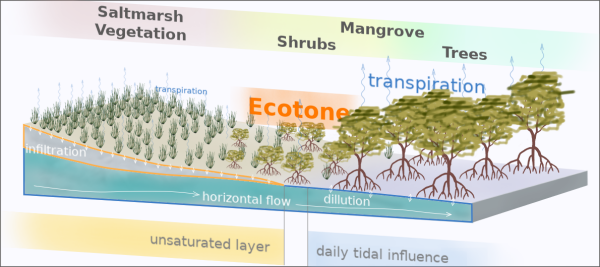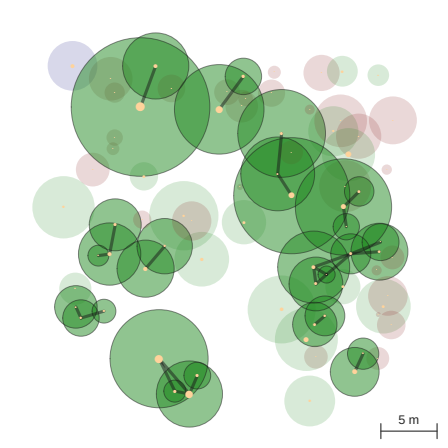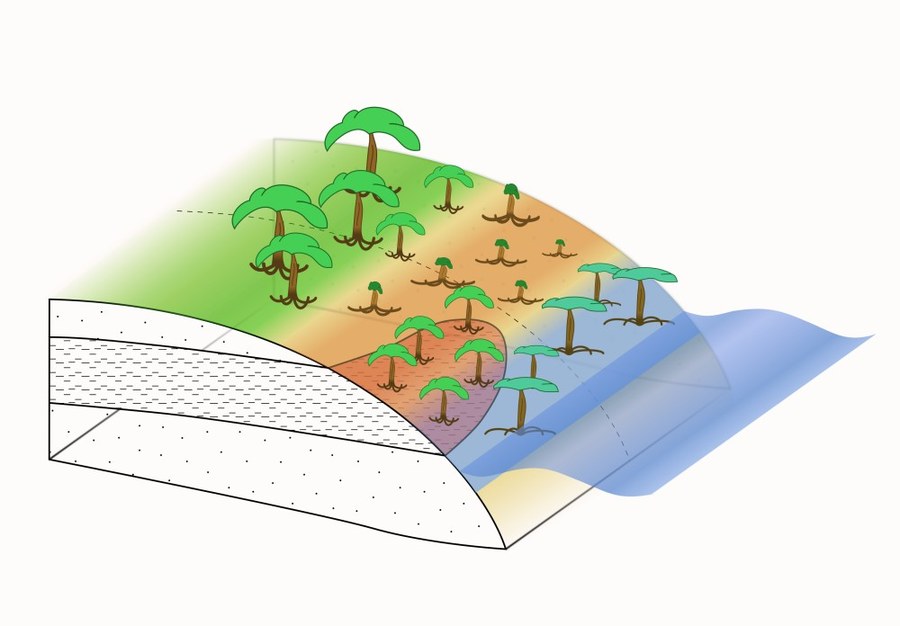Projects
MASCOT Mangrove-Saltmarsh ecotone patterns as indicators for critical impacts of sea level rise and climate change on coastal wetlands
Tropical and subtropical coastal wetlands typically consist of two main habitat types, namely mangroves and saltmarshes. The transition between both habitat types is referred to as “mangrove-saltmarsh ecotone”. With this project, we intend to reach a general understanding of the underlying mechanisms resulting in ecotone patterns and their shifts. We will develop and use a mechanistic simulation model (on the basis of the MANGA model, as developped in the preceding MARZIPAN project) that will describe the fully coupled interactions between saltmarsh plants, mangrove shrubs and trees, and soil water, as we assume that the dominance of either woody mangrove vegetation or herbaceous saltmarsh vegetation relies mainly on the interplay of subsurface flow processes, tidal flooding, precipitation regime and vegetation-soil-feedback mechanisms.

KROPOTKIN'S GARDEN Networking beats competition in the struggle for limited resources
Natural root grafting could play a pivotal role in resource sharing among tree networks since it can be interpreted as collaborative behaviour as known for superorganisms. It will be surveyed systematically under which conditions resource sharing via grafting will be beneficial for trees instead of exploiting a limited resource alone.

MARZIPAN Adopting mangrove vegetation zonation patterns to gain information on subsurface aquifer structures and advance below-ground plant competition concepts in individual-based modelling
We intend to extend the knowledge and understanding of the processes intrinsic in the interactions between vegetation and subsurface hydrodynamics by developing and employing a new, fully coupled plant-soil water modelling approach for mangrove ecosystems. Specifically, we want to gain insight into the relationships between visible vegetation patterns and subsurface aquifer structures and potential gradients by tidal and groundwater influence. The fully coupled approach will allow us to understand the physical mechanisms of below-ground plant interaction. further, adopting vegetation zonation patterns will enable us to gain information on subsurface aquifer structures and parameterization.


